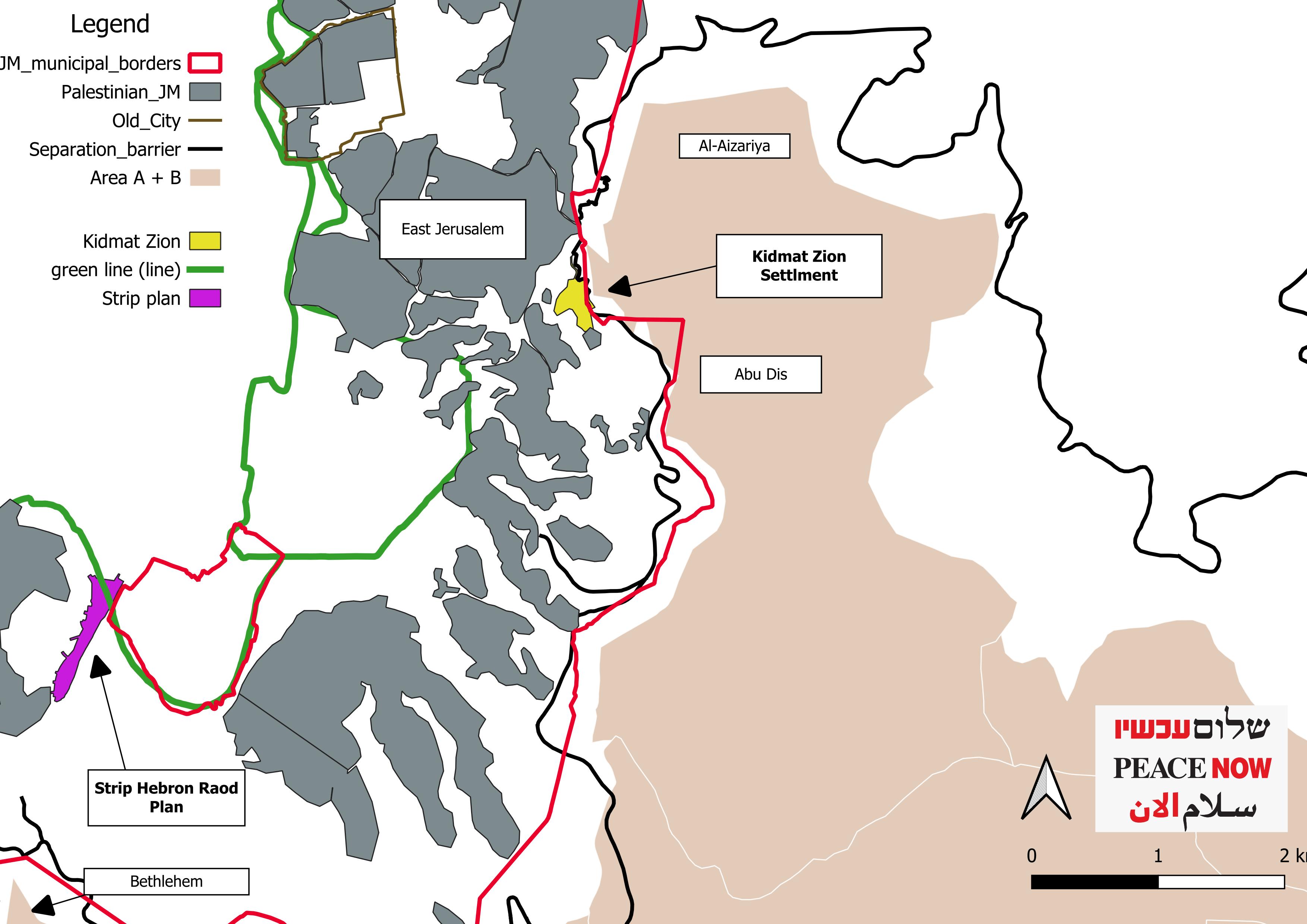[Update from September 14, 2023: The Jerusalem Local Planning and Building Committee has officially approved the two building plans in East Jerusalem following their discussion on Monday, September 11, 2023].
The Jerusalem Local Planning and Building Committee is set to discuss two major building plans on Monday, September 11, 2023, both of which carry significant political implications in East Jerusalem. One plan is located in the southern part of the city, adjacent to the Givat Hamatos neighborhood. This plan encompasses residential complexes (3,500 housing units), hotels (1,300 rooms), and commercial and employment areas. The second plan involves the construction of a new settlement right in the heart of the Palestinian neighborhood of Ras al-Amud (Al-Shayakh) and close to the Abu Dis Palestinian village, comprising 384 housing units. This new settlement, named Kidmat Zion, is expected to become a new focal point of tension between settlers and Palestinian residents in this densely populated Palestinian area.
Kidmat Zion Settlement (Plan 101-0120709)
The Jerusalem District Planning and Building Committee is expected to discuss a plan for the establishment of a new settlement, Kidmat Zion, consisting of 384 housing units. This settlement will be situated in the heart of East Jerusalem, within entirely Palestinian territory. The plan is initiated by the Ateret Cohanim settler organization and is located on one of the few remaining open lands at the eastern edge of the Ras al-Amud neighborhood, close to Jericho Road. The neighborhood abuts the separation barrier between Jerusalem and Abu Dis. On the other side of the barrier, one can see a building that was intended to serve as the Palestinian Parliament and was built in the late 1990s. As mentioned, the plan proposes to build 384 housing units, of which 7 units are already built on the site and occupied by settlers.

History of the ‘Kidmat Zion’ Lands
The future Kidmat Zion settlement is planned to be built on land that was partly defined as Jewish-owned before 1948 and partly land acquired by Irwin Moskovitz, a well-known former donor to settler organizations in East Jerusalem. The first families moved into the area in 2004, residing in two houses that were constructed on the outskirts of the compound (one of the houses was built shortly before the settlers’ entry). To facilitate the settlers’ entry into these houses, it was decided to move the route of the separation barrier, which was constructed at that time, to the east, adjacent to the building that was intended to serve as the Palestinian Parliament, constructed in the late 1990s.
The Hebron Road “Strip” Plan (Plan 101-0657593)
The “Strip” plan (Hebron Road Strip) is located along Hebron Road, covering an area of approximately 140 dunams, intended for 3,500 residential units, hotels, and a commercial area. The project is a joint initiative of the Greek Orthodox Church, the landowner, and Dyani Holdings. About two-thirds of the plan’s area is located beyond the Green Line, bordering the Givat Hamatos neighborhood, and is planned to run alongside the planned light rail line on Hebron Road. Building plans along the light rail route enjoy higher building percentages compared to other parts of the city. Therefore, in the developers’ proposal, residential towers with heights of up to 30 floors are included. Increasing the building percentages allows for the construction of 3,500 housing units, hotels, and a commercial area on a relatively narrow piece of land. For comparison, existing building plans for Givat Hamatos are divided into three different plans, and together they comprise 3,972 residential units on an area of 411 dunams (compared to 140 dunams in the current plan). The “Strip” plan also nearly doubles the number of housing units in the Givat Hamatos area. The Greek Orthodox Patriarchate claims that a significant portion of the construction in the complex is intended for the city’s Christian community.
The Connection between the ‘Strip’ Plan and Other Plans
Since the late 1990s, and particularly in recent years, the Israeli government has been promoting construction in the southern municipal area of Jerusalem, annexed after 1967, beyond the Green Line. After the construction of the Har Homa neighborhood in the 1990s, the construction of the Givat Hamatos neighborhood began in 2021. Simultaneously, the plan for the construction of the Lower Aqueduct neighborhood, which crosses beyond the Green Line, also commenced. The Strip plan is located in the last vacant area between Jericho Road and the Givat Hamatos neighborhood. The plan disconnects Bethlehem from East Jerusalem, except for the transportation axis of the Hebron Road, thereby preventing any future Palestinian territorial continuity between East Jerusalem and Bethlehem, which is crucial for the establishment of a Palestinian state.
Peace Now: “The Israeli government is promoting two plans with significant political implications in East Jerusalem. While Kidmat Zion is situated deep within the Palestinian population of East Jerusalem and on entirely Palestinian territory, the Strip plan eliminates any possibility of future territorial continuity between Bethlehem and Jerusalem, which is essential for a two-state solution.”

